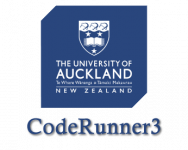- Teacher: AHN
- Teacher: Giacaman
- Teacher: Kashif
- Teacher: Lim
- Teacher: Starling Babette
Available courses
- Teacher: Geng
- Teacher: Sheehan
- Teacher: Cameron
- Teacher: Dananja Gunawardena
- Teacher: Singh
- Teacher: Tempero
- Teacher: Yao
Introduction to Engineering Computation and Software Development
Introduction to problem solving in engineering through the use of the software package MATLAB, and the programming language C.
- Teacher: Denny
Computational methods and techniques for computer vision are applied to real-world problems such as 2/3D face biometrics, autonomous navigation, and vision-guided robotics based on 3D scene description. A particular feature of the course work is the emphasis on complete system design. Recommended preparation: COMPSCI 373 and 15 points at Stage II in Mathematics.
An advanced course looking at the latest computer graphics technologies and their use in research and commercial applications. Typical topics are games (e.g. for health, rehabilitation, education), novel modelling and animation techniques, advanced user interfaces (sketch based interfaces, Augmented and Virtual Reality), advanced OpenGL (advanced shading, rendering, texturing, shadows) and GPU accelerated algorithms.
This course introduces the fundamentals of image processing and computer graphics, which are necessary for the analysis and processing of image data and for the reconstruction, modelling, animation and photo-realistic rendering of 3D. You will learn key computer graphics concepts including graphics primitives, lighting and shading, texture mapping, ray tracing, curve and surface representation. In addition image processing fundamentals are presented such as image definition and representation, perception and colour models, grey level and colour enhancement, neighbourhood operations and filtering. Basic geometric processes for image analysis and scene formation will be discussed including transformations, viewing and projection, and digital geometry.
An introduction to software development, including processes, best practices, tools and quality assurance techniques such as testing. This course is about figuring what to build and building it, not implementing a specification. Students will also learn about organising development activities and working in project environments.
- Teacher: Cameron
- Teacher: Chang
- Teacher: Finnie-Ansley
- Teacher: Luxton-Reilly
- Teacher: Urschler
- Teacher: Wuensche
This course introduces the fundamentals of image processing and computer graphics, which are necessary for the analysis and processing of image data and for the reconstruction, modelling, animation and photo-realistic rendering of 3D. You will learn key computer graphics concepts including graphics primitives, lighting and shading, texture mapping, ray tracing, curve and surface representation. In addition image processing fundamentals are presented such as image definition and representation, perception and colour models, grey level and colour enhancement, neighbourhood operations and filtering. Basic geometric processes for image analysis and scene formation will be discussed including transformations, viewing and projection, and digital geometry.
Tessfsdfsfs sdfsdfs
